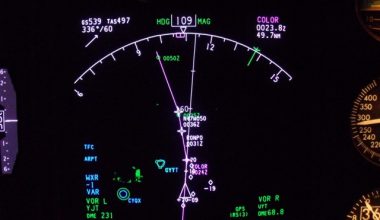
What is Cabin Pressurization?
Cabin pressurization can be defined as the act to inject the conditioned air to the aircraft when flying at an altitude to maintain a cozy and safe environment to the passengers flying through high altitude with low atmospheric pressure inside the fuselage.
Pressurization is the most essential way to protect the crew and passengers over three thousand meters (9,800 Ft.) from the risk of hypoxia and a number of others physiological problems that arises at the thin air above the altitude and increases passengers snug usually.
Usually, the oxygen level is on the same percentage at high altitude as that on the sea level. But as the altitude increases, there exists a low pressure due to which less oxygen is available to breath for the passengers inside the fuselage. Because of this, aircraft are pressurized to simulate a lower altitude inside the cabin.
The outflow valve of the aircraft is constantly positioned to maintain the cabin pressure as possibly close to the sea level without exceeding the pressure to outside pressure differential of 8.60 psi.” At the cruising altitude of 39,000 feet (FL 390), a Boeing 767’s cabin will be pressurized to an altitude of 6,900 feet.
What happens when the aircraft loses its cabin pressure?
The loss of the cabin pressure invites a risk to the passengers and the crew from hypoxia, altitude sickness, decompression sickness and barotraumas. It sometimes can also cause catastrophic air-crashes.
Hypoxia:
If the aircraft lose its cabin pressure, crew and passengers are at the high risk of Hypoxia. The less amount of oxygen into the lungs and subsequently in the brain can cause to sluggish thinking, dimmed vision, loss of consciousness and ultimately can cause the death of the victim. For those particularly passengers or the crew with the heart or lung disease, symptoms may begin as low as 1,500 meters (4,900 Ft.) above sea level although most passengers can tolerate altitudes of 2,500 meters (8,200 ft) without ill effect. At this elevation, there is about 25% lesser amount of oxygen than there is at sea level. Hypoxia may be dealt by the administration of supplemental oxygen, usually through an oxygen mask sometimes through a nasal cannula.
Altitude sickness:
The less local partial pressure of Carbon dioxide causes the CO2 to out-gas from the blood raising the blood pH and also inducing the alkalosis. The passengers and crew of the aircraft sometimes may experience fatigue, nausea, headaches, and sleeplessness and on extended flights even pulmonary oedema. Those symptoms are experience by mountain climbers but the limited time of the powered flight makes the development of pulmonary oedema unlikely. Altitude sickness may be controlled by a full pressure suit with helmet and faceplate, which completely envelopes the body in a pressurized surroundings; this is clearly unreasonable for commercial passengers.
Decompression sickness:
Decompression sickness is also called the bends or caisson disease. The less amount of local partial pressure of gases, nitrogen but including all the other gases can cause the dissolved gases in the bloodstream to precipitate out resulting in gas embolism or bubbles in the bloodstream. This mechanism is the same as for the compressed air divers on ascent from depth. The some of the symptoms may include: tiredness, forgetfulness, headache, stroke, thrombosis subcutaneous itching but rarely the full symptoms of the bends. It can also be controlled by a full pressure suit as for altitude sickness.
Barotrauma:
Barotrauma is physical damage to body tissues caused by a difference in pressure between a gas space inside, or in contact with the body, and the surrounding fluid. As the aircraft climbs or descends passengers may experience discomfort or acute pain as gases trapped within their bodies expand or contract. The most frequent problems occur with air trapped in the center ear (aerotitus) or paranasal sinuses by a blocked Eustachian tube or sinuses. Pain may also be experienced in the gastrointestinal tract or also the teeth (barodontalgia). Usually these are not harsh enough to cause actual trauma but can result in soreness in the ear that persists after the flight and can exacerbate or sudden pre-existing medical state such as pneumothorax (collapsed lung). The subsequent video is on barotrauma on bats as they flew through wind turbines.
The Pressurization is when the aircraft is keeps its pressure at a safe psi when the outside altitude and pressure is far lower and colder. This is to sustain life on board the flight and to give comfort to human live. When pressurization is not done properly, there will be a drastic loss of pressure and a number of illnesses will set in to hinder to human life.





